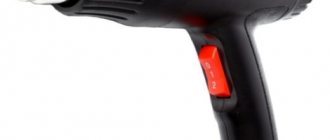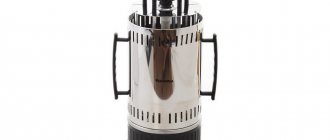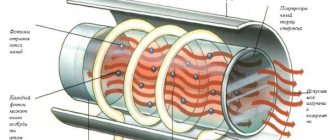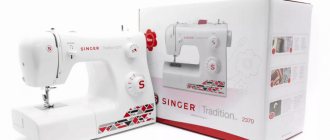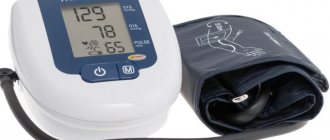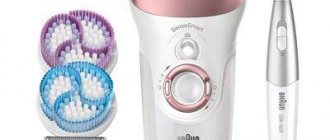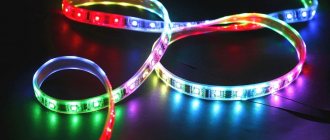Household and professional tools
Based on the expected load and intensity of use, drills can be divided into household and professional. For the manufacture of the latter, special designs and materials are used that have an increased ability to resist wear. This allows the device to work flawlessly for several hours on end.
Household tool models are characterized by less wear resistance and relatively easy assembly. But such drills are much cheaper than professional equipment and are considered a good option for use at home.
Professional or household
Buying a drill is really not difficult. Without exception, all manufacturers of power tools offer their models, differing in price and consumer characteristics. The choice is wide, so in order not to get lost in the sea of offers, it’s worth understanding how different models differ from each other and what characteristics you should pay attention to.
First of all, electric drills can be divided into two large groups: tools for professional use and household models. The professional tool is characterized by:
- narrower specialization;
- high power;
- long operating time;
- strength and durability;
- ergonomics.
Despite all the apparent advantages, a professional tool has a significant drawback - its high price. It is often several times more expensive than simple household models. If you need a tool that will be used occasionally, the best choice is a household electric drill.
Having an affordable price, it is not far behind more expensive models in a number of basic characteristics. A household electric drill is a universal tool that is lightweight, easy and safe to use.
Note! The drill for home work is sold in a set with running attachments and has a great warranty.
To choose the right drill for your home, you should focus on the amount of work that will be performed using this tool. You should not overpay for power if you need to drill several holes per month.
Types of drills
Depending on the structural features of the structure and scope of application, a couple of classifications can be distinguished.
By purpose
Unstressed
It would be advisable to choose a non-impact type option for wood, metal and plastic. Its advantages, in addition to universal application, include compactness and ease of operation. It is worth considering that such devices are not designed for long hours of activity with a heavy load.
This type has a primitive design compared to all other types of instruments. The only function of the device is to rotate the drill.
It would be advisable to use such a drill for domestic needs; it cannot cope with concrete or stone materials.
Having a percussion mechanism
They can easily make holes in solid crystalline materials, which is why they are in demand. They have the function of a hammer drill. Unlike the previous version, they operate in two modes: drilling and impact drilling. Such devices are more universal. At the owner's request, the impact mechanism can be turned off.
However, the design is quite banal, so you can only count on a certain range. Abuse of the shock mode can lead to premature failure of the device. Thus, the share of work of the impact mechanism should be no more than a fifth of the total time the device is used.
Screwdriver
Replaces two tools at once in everyday life. In addition to drilling, it is used for screwing in or removing elements. This is a popular device for people who often have to assemble structures and use a large number of fasteners, such as screws and screws.
This model is not capable of interacting with solid materials. You can't ask for more from such a model.
Corner
Used when drilling skirting boards or assembling furniture frames. The downside is the lack of an option to integrate a striking mechanism, as well as reduced power.
Accordingly, the device is useless for working with hard materials. For this reason, most professionals use special attachments for corner work.
Mixer
The need to prepare building mixtures is no less important than drilling. For this, a special device is used that helps to mix the solution correctly.
The set comes with a whole set of different attachments. In addition to mixing solutions, they can be used for drilling certain materials at low power. The set includes a set of necessary attachments. This helps increase the efficiency of working with the material.
By food type
Network
It only works when plugged into a power outlet. The cost of a corded drill can be favorable, and the ability to choose from a large number of powers helps to cope with work of different levels. It can be found both in workshops and in private homes for domestic needs.
The most significant disadvantage of network devices is, of course, the limitation of the movement of the instrument by the cord. They are often too heavy, which also interferes with efficient work.
Rechargeable
Unlike the previous version, the mechanism of the battery device implies the presence of a special battery, which is located in the handle. Because of this, the drill becomes heavier, but the master has an important and significant opportunity for personal comfort to carry out work in places without electrical power. Thanks to replaceable batteries, you can use the device for several hours on end.
However, this model may not be suitable for drilling very hard floors, since it does not have such high power.
Specialized drills
An electric drill, by definition, is a universal tool, however, there are models whose design is optimized for one specific action. This does not detract from the overall advantages of the tool, but it provides maximum convenience when performing certain operations. Therefore, when looking for an electric drill, you also need to decide on the type of work that will most often be performed.
Impact drill
The purpose of this tool is to drill hard materials, meaning brick or concrete. A distinctive feature of an impact drill is that, in addition to rotation, the drill also performs translational movements; in principle, it chisels the wall. From this we can conclude that if the task is to purchase a tool for working in an apartment in a multi-story building, there is nothing left to do but choose an impact drill; it is guaranteed to meet all expectations.
At the same time, you should not count on the fact that such a device will completely replace a hammer drill; in the case of constant drilling of walls, an impact drill will not last long. The reason for the fragility lies in the mechanism that ensures the translational movement of the drill. Structurally, these are several gear couplings that slip, causing the chuck with the drill to move.
Most models of impact drills provide the ability for regular drilling; a corresponding switch is provided for this.
Drill with screwdriver function
When repairing or assembling furniture, it is unlikely that you will be able to do without a screwdriver, but it is not always wise to buy one separately; it is an extra expense. It is more rational to choose a drill, a universal tool that can drill a hole and screw in a screw with equal success.
A drill with a screwdriver function is distinguished by the presence of:
- speed controller;
- possibility of working in pulse mode;
- rotation force adjustment;
- rotation direction switch.
Often this tool is battery powered, which is quite justified. The fact is that a drill-driver rarely has more power, while it is convenient to work with it without being tied to an outlet.
Angle type drills
Often you have to work in confined spaces, where you can’t get to a place with a regular drill. An angle drill will provide good results and ease of use. Its feature is an angular gearbox, thanks to which the drill is positioned perpendicular to the rotor of the electric motor.
Devices of this type have a limited scope of application; apart from simple drilling of soft materials, they cannot be used to perform any other work. For home use, it is more rational to buy a special attachment for a conventional electric drill, which allows you to drill at an angle.
Mixer
During repairs, it is impossible to do without preparing various building mixtures. Most often, a conventional electric drill with an attachment is used for this, but this affects the durability of the tool. For regular use, it would be correct to buy a special drill mixer. It differs from the usual one:
- more power;
- special handles for ease of use;
- anti-jamming devices;
- complete whisks.
This tool is convenient not only for preparing mixtures, but also for drilling hard materials with large-diameter drills, and drilling walls using replaceable bits.
Key Features of Selection
When buying a tool, you should not pay attention only to cost, functionality or size. There are several important criteria and aspects that will help you choose a drill yourself. Before purchasing a device, you need to carefully study the overview of all the characteristics.
Power
The rotation speed and the ability to drill holes in materials of varying hardness largely depend on the power of the drill. This figure ranges from 300 to 2000 W. The larger it is, the more impressive the loads that the mechanism can withstand. The power of models for professional use does not fall below 1000 W.
The weight of the device also depends on this criterion, so you need to carefully approach the issue of choice. If materials denser than brick are not used for work, you can stop at a drill power of 800-1000 W. This will avoid pain in the hands from the need to exert additional effort when drilling, but at the same time, the drill will not burden the master with a lot of weight. To work with concrete or other hard materials, you need to choose a drill with more power.
Thus:
- 450 W – for minor repair work indoors;
- 700–800 W – for work at emergency facilities;
- 1000 W – for serious repair work by experienced craftsmen;
- more than 1200 W – for metal processing enterprises.
Shaft rotation speed and its adjustment
Without high-speed revolutions, the master will not be able to properly sand the surface. In addition, the number of revolutions per minute also plays an important role during impact work. For some models this figure is 3,500 rpm. The higher, the faster the required hole is drilled. To screw in a screw, it is not necessary to take models at high speed; an indicator of 500–600 rotations per minute is suitable.
Some device models can only operate at one speed, which can be changed by adjusting the number of revolutions. This process takes a certain amount of time, which makes it inconvenient. Therefore, drills have been created with several main speeds, which allows you to quickly switch between them.
Drilling diameter
The drilling diameter is an aspect that you need to take a closer look at for subsequent correct work with the tool at home. The instructions for each drill indicate the largest and smallest diameter of the holes that this model can make. Their maximum value is often different. If you use a drill that is too large in diameter, the device will quickly fail. This figure ranges from 0.3–30 mm. Basic optimal values:
- 90–80 mm – suitable for brick walls;
- 9–32 mm – for installation of plumbing fixtures;
- 32 mm – for working with metal;
- 10–70 mm – for wood.
Chuck type
The drill can be fixed in several ways, and accordingly, the chucks can also be of different types:
- Key. Allows you to best secure the drill using a special key. Used in more powerful and massive models. The obvious disadvantage is the replacement of the drill.
- Self-clamping. It does not require special keys for replacement, so it can be used for quick work with various materials, including metal.
- Collet. Fixing requires more effort than with the previous option. Suitable for people working with machines.
What other parameters to consider when choosing
- An important point is the convenience of the design and the absence of discomfort during use. The body can be made of various materials. Handle covers can improve the safety of the device and make it more comfortable to use.
- The presence of an additional handle will allow you to drill dense floors with greater comfort. It can be removed and rotated or securely attached to the body.
- Additional lighting is needed to illuminate hard-to-reach areas.
- Nozzles can be purchased separately. They have a wide range of functionality and are used for a variety of jobs.
Drill rating
There are a variety of products available in the home tools market. Depends on the features of the drilling machine and the brand itself. The rating of electric drills based on the advice of experts and user reviews will help you navigate and make the right choice.
Bison ZDU-780 ERKM2
The top of the drill is one of the most common impact models, suitable for amateurs. This option is attractive due to its inexpensive cost and acceptable parameters. Due to its characteristics, this electric drill is suitable for any need.
- Max. drilling diameter: 13 mm;
- power: 780 W;
- Max. speed: 3000 rpm.
Whirlwind DU-1100
High-quality drill at an affordable price. The locking button attracts special attention: working with such a device is even safer.
- Max. drilling diameter: 13 mm;
- power: 1100 W;
- max. speed: 3000 rpm.
Hitachi DV16V
Suitable for long-term and frequent household repairs. Thanks to its low weight it is convenient to use. Short cord.
- Max drilling diameter: 13 mm;
- power: 590 W;
- max. speed: 2900 rpm.
Dnipro M
It has two operating modes, which makes the model universal. Thanks to the additional reliable handle, you can properly distribute the load.
- Max drilling diameter: 13 mm;
- power: 1200 W;
- max. speed: 2500 rpm.
The best impact drills for quality and reliability
Interskol DU-16/1000ER
These inexpensive drills are the best in terms of price and quality. Can make holes in various materials.
- Max drilling diameter: 13 mm;
- power: 1000 W;
- max. speed: 2500 rpm.
Makita hp1640k
This Chinese device is one of the most popular in the top. It weighs little, so it will be easy for both men and women to work with it.
- Max drilling diameter: 13 mm;
- power: 680 W;
- max. speed: 2800 rpm.
BOSCH GSB 1600 RE BZP
A popular German company will be able to pleasantly surprise you. This tool model will last for more than one year.
- Max drilling diameter: 13 mm;
- power: 700 W;
- max. speed: 3000 rpm.
DeWALT DWD024
The rating of electric drills cannot be imagined without this position. The manufacturer allows you to choose the rotation speed, which makes use much easier. Long quality cord.
- Max drilling diameter: 13 mm;
- power: 750 W;
- max. speed: 2800 rpm.
Is reverse motion necessary in drills?
Most instruments already come with reverse, but some models are still made without it. The best electric drill will have this feature as it is very convenient. When working with wood, concrete or metal, a situation often arises when the drill gets stuck in the material and needs to be removed, but this does not work because it does not turn. Then you press the “rescue button” and easily pull it back, or rather, you don’t even need to pull - it will unscrew itself.
And here it doesn’t matter at all which company you bought the drill from, since the reverse is useful everywhere and it’s better not to take the tool without it - there is a high probability of drill bits breaking and problems arising in the work, especially for metal. It is especially pleasant when reverse is combined with soft start - the scope of application of the tool is significantly expanded.
The best hammerless drills
Metabo BE 650 (BZP)
Used for drilling holes in a wide variety of materials. A convenient advantage is that you can quickly change the drill.
- Max drilling diameter: 13 mm;
- power: 650 W;
- max. speed: 2800 rpm.
DIOLD MES-5-03
DIOLD MES-5-03 is among the top quality electric drills. Attracts users with power and light weight.
- Max drilling diameter: 13 mm;
- power: 800 W;
- max. speed: 1200 rpm.
AEG BE 750 R
The long cord eliminates the need for extension cords, giving the advantage of freedom of movement.
- Max drilling diameter: 13 mm;
- power: 750 W;
- max. speed: 3000 rpm.
